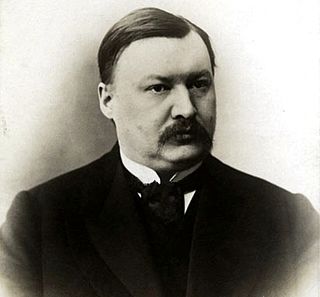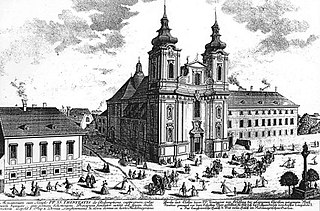Structure
The symphony has four movements:
The Symphony No. 5 in B-flat major, Op. 55, was written by Alexander Glazunov from April to October 1895. Although in this symphony Glazunov returned to his conventional four-movement layout (his Fourth Symphony had only three) he frequently utilizes thematic transformation.
The symphony calls for a romantic orchestra of the following instruments:
3 flutes (3rd doubling piccolo), 2 oboes, 3 clarinets in B-flat (3rd doubling bass clarinet), 2 bassoons, 4 horns, 3 trumpets, 3 trombones, tuba, timpani, triangle, cymbals, bass drum, bells, harp, strings
The symphony has four movements:
Glazunov dedicated his Fifth to Sergei Taneyev, a Russian composer, pianist, and teacher, and it was first performed at the Second Russian Concert at the Hall of the Nobility in St. Petersburg on 17 November 1896; the premiere was conducted by the composer himself.
Symphony No. 12 in D minor, Op. 112, subtitled The Year 1917, was composed by Dmitri Shostakovich in 1961. He dedicated it to the memory of Vladimir Lenin. Although the performance on October 1, 1961, by the Leningrad Philharmonic Orchestra conducted by Yevgeny Mravinsky was billed as the official premiere, the actual first performance took place two hours earlier that same day in Kuybyshev by the Kuybyshev State Philharmonic Orchestra conducted by Abram Stasevich.
The Violin Concerto No. 1 in A minor, Op. 77, was originally composed by Dmitri Shostakovich in 1947–48. He was still working on the piece at the time of the Zhdanov Doctrine, and it could not be performed in the period following the composer's denunciation. In the time between the work's initial completion and the first performance, the composer, sometimes with the collaboration of its dedicatee, David Oistrakh, worked on several revisions. The concerto was finally premiered by the Leningrad Philharmonic under Yevgeny Mravinsky on 29 October 1955. It was well-received, Oistrakh remarking on the "depth of its artistic content" and describing the violin part as a "pithy 'Shakespearian' role."
The Young Person's Guide to the Orchestra, Op. 34, is a 1945 musical composition by Benjamin Britten with a subtitle Variations and Fugue on a Theme of Purcell. It was based on the second movement, "Rondeau", of the Abdelazer suite. It was originally commissioned for the British educational documentary film called Instruments of the Orchestra released on 29 November 1946, directed by Muir Mathieson and featuring the London Symphony Orchestra conducted by Malcolm Sargent; Sargent also conducted the concert première on 15 October 1946 with the Liverpool Philharmonic in the Philharmonic Hall, Liverpool, England.

The Violin Concerto in A minor, Op. 82, by Alexander Glazunov is one of his most popular compositions. Written in 1904, the concerto was dedicated to violinist Leopold Auer, who gave the first performance at a Russian Musical Society concert in St. Petersburg on 15 February 1905. The British premiere of the concerto followed just over a year later, under the direction of Sir Henry Wood and with Mischa Elman as soloist. The American premiere of the work was not until 27 October 1911. It was performed by Efrem Zimbalist at his American debut with the Boston Symphony Orchestra.
The Symphony No. 4 in E-flat major, Op. 48, was written by Alexander Glazunov in 1893. The symphony was a departure from Glazunov's three earlier symphonies, which were based on nationalistic Russian tunes and, according to the composer, allowed him to give "personal, free, and subjective impressions of myself."
Hyacinthe Jadin was a French composer who came from a musical family. His uncle Georges Jadin was a composer in Versailles and Paris, along with his father Jean Jadin, who had played bassoon for the French Royal Orchestra. He was one of five musical brothers, the best known of whom was Louis-Emmanuel Jadin.
Antonín Dvořák's Requiem in B♭ minor, Op. 89, B. 165, is a funeral Mass scored for soloists, choir and orchestra. It was composed in 1890 and performed for the first time on 9 October 1891, in Birmingham, England, with the composer conducting.
The Symphony No. 1 by Arnold Bax was completed in 1922 and dedicated to John Ireland. Its outer movements were based on a Piano Sonata in E♭ that Bax subsequently orchestrated, while the central movement was newly composed for the symphony.
John Marsh was an English gentleman, composer, diarist and writer born in Netherseal, Derbyshire, England. A lawyer by training, he is known to have written more than 350 compositions, including at least 39 symphonies. While today known primarily for his music, he also had strong interest in other fields, including astronomy and philosophy, and wrote books about astronomy, music, religion, and geometry.
The Symphony No. 6 in E-flat minor, Op. 23 by Nikolai Myaskovsky was composed between 1921 and 1923. It is the largest and most ambitious of his 27 symphonies, and uses a chorus in the finale. It has been described as "probably the most significant Russian symphony between Tchaikovsky's Pathétique and the Fourth Symphony of Shostakovich". The premiere took place at the Bolshoi Theatre, Moscow on 4 May 1924, conducted by Nikolai Golovanov and was a notable success.
The Symphony in F-sharp, Op. 40, is the only symphony by 20th-century Austrian composer Erich Wolfgang Korngold, although as a teenager in 1912 he had written a Sinfonietta, his Op. 5. Using a theme from the 1939 film The Private Lives of Elizabeth and Essex, the symphony was completed in 1952 and dedicated to the memory of American president Franklin D. Roosevelt, who had died seven years earlier.
Alexander Glazunov composed his Symphony No. 3 in D major, Op. 33, in 1890, and it was published by 1892 by the Leipzig firm owned by Mitrofan Belyayev. The symphony is dedicated to Pyotr Ilyich Tchaikovsky and was first performed in St. Petersburg in December 1890 under the baton of Anatoly Lyadov. The symphony is considered a transitional work, with Glazunov largely eschewing the influences of Balakirev, Borodin, and Rimsky-Korsakov inherent in his earlier symphonies for the newer influences of Tchaikovsky and Wagner. Because of this change, the Third has been called the "anti-kuchkist" symphony in Glazunov's output. He would tone down these new influences in his subsequent symphonies as he strove for an eclectic mature style. The Third also shows a greater depth of expression, most evident in the chromatic turns of its third movement, reminiscent of Wagner's opera Tristan und Isolde.
The Symphony No. 7 in F major, Pastoral, Op. 77, was completed by Alexander Glazunov on July 4, 1902. It is dedicated to Mitrofan Belyayev.
The Symphony No. 1 by the British composer Michael Tippett was completed in 1945.
The Third Symphony by Alfred Schnittke was his fourth composition in the symphonic form, completed in 1981.

Mass No. 6 in E-flat major, D 950, is a mass composed by Franz Schubert, a few months before his death. It is scored for two tenor soloists, soprano, alto and bass soloists, SATB choir with divisi, 2 oboes, 2 clarinets, 2 bassoons, 2 horns, 2 trumpets, 3 trombones, timpani, violin I and II, viola, cello, and double bass. It was Schubert's final setting of the order of Mass, and is classified as a missa solemnis.
The Symphony No. 3 in B minor "Ilia Mourometz", Op. 42, is a large symphonic work by Russian composer Reinhold Glière. A program symphony, it depicts the life of Kievan Rus' folk hero Ilya Muromets. It was written from 1908 to 1911 and dedicated to Alexander Glazunov. The premier took place in Moscow on 23 March 1912 under Emil Cooper, and in 1914 the piece earned Glière his third Glinka Award.
The Symphony No. 8 in E-flat major, Op. 83, was composed by Alexander Glazunov in 1905, and was published two years later. This four-movement symphony was premiered on December 22, 1906 in Saint Petersburg, the composer conducting. It was an important influence on Igor Stravinsky's Symphony in E-flat.
The Symphony No. 6 in C minor, Op. 58, was composed by Alexander Glazunov in 1896, and was published two years later. It is dedicated to Felix Blumenfeld.

The Overture Maslenitsa, Op. 36, was composed by Airat Ichmouratov during 2012 - 2013 years. It was commissioned and premiered in Chicoutimi, Canada on 24 February 2013 by L'Orchestre Symphonique du Saguenay–Lac-Saint-Jean under the baton of French-Canadian conductor Jacques Clément.